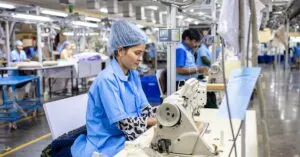Table of Contents
ToggleIn a world where creativity knows no bounds, 3D printed mold making is the magic wand every innovator needs. Imagine whipping up custom molds faster than you can say “Where’s my coffee?” This cutting-edge technology not only saves time but also opens the door to endless possibilities. It’s like having a genie in a printer, ready to grant your wildest manufacturing wishes.
Overview of 3D Printed Mold Making
3D printed mold making revolutionizes the production process by offering speed and efficiency. This technique involves using additive manufacturing technologies to create molds from digital designs. By eliminating traditional mold-making delays, manufacturers can produce prototypes and final products rapidly.
A variety of materials suitable for 3D printed molds include thermoplastics, resin, and even metals. Thermoplastic molds showcase durability, allowing for multiple uses in low-volume productions. Resin molds, on the other hand, provide detail and precision for intricate designs, while metal molds offer long-lasting solutions for high-volume runs.
Utilizing CAD software designs allows for flexibility in customization. Manufacturers can easily modify mold specifications based on project requirements without significant lead times. Iterating designs becomes simple, as changes necessitate only digital updates rather than physical alterations to tooling.
Cost implications also change with 3D printed molds, as initial investments often decrease. Traditional mold-making processes can involve extensive labor and materials, resulting in higher upfront costs. In contrast, 3D printing allows for lower expenses during the prototyping phase, making it accessible for small businesses and startups.
Additionally, the environmental impact benefits from reduced waste generation. Traditional machining processes typically produce excess material, contributing to waste. By contrast, 3D printing uses only the necessary material needed for molding, leading to more sustainable practices.
Overall, 3D printed mold making stands out for its efficiency, customization opportunities, cost-effectiveness, and environmental friendliness. As industries continue to adopt this innovative manufacturing technology, new solutions and applications are likely to emerge, expanding the horizons of mold design and production.
Advantages of 3D Printed Mold Making
3D printed mold making presents numerous benefits that enhance manufacturing processes. These advantages include speed of production, cost effectiveness, and design flexibility.
Speed of Production
Speed defines the essence of 3D printed molds. Unlike traditional methods, which can take weeks for mold creation, 3D printing reduces this time to days or even hours. Rapid prototyping facilitates quick adjustments and iterations, leading to faster product development. Organizations rely on this efficiency to meet market demands promptly. Accelerated production also allows for timely feedback and iterative design changes based on testing outcomes.
Cost Effectiveness
Cost efficiency characterizes 3D mold manufacturing. Initial investments in 3D printing technology often remain lower than those for traditional molding approaches. Small businesses particularly benefit from reduced upfront costs, which enhance accessibility to innovative manufacturing. The elimination of expensive tooling reduces overall production expenses. Savings accrue not only in materials but also in labor costs, thanks to automation in the printing process.
Design Flexibility
Design flexibility illustrates the strengths of 3D printed molds. Complex geometries and intricate designs become feasible without additional costs. Custom molds can adapt easily to specific project requirements, allowing for tailored solutions. Factors such as size, shape, and functionality receive consideration during the design phase without constraints associated with traditional manufacturing. Designers often leverage CAD software to fine-tune models seamlessly, promoting creativity and innovation in product development.
Types of 3D Printing Technologies Used
3D printed mold making utilizes various printing technologies, which contribute to versatility and effectiveness in mold creation. Each method has distinct features and applications.
Fused Deposition Modeling (FDM)
Fused deposition modeling stands out for its simplicity and reliability. This technology extrudes heated thermoplastic filaments layer by layer, creating molds with precision. Common materials include ABS and PLA, which are widely available and cost-effective. FDM accommodates complex designs while maintaining structural integrity, making it suitable for prototyping and low-volume production. Users often favor this method for its quick setup and low operational costs, enhancing accessibility for smaller businesses.
Stereolithography (SLA)
Stereolithography offers high-resolution mold making through a different process. This technique employs a UV light source to cure liquid resin into solid layers, resulting in exceptionally detailed molds. SLA is advantageous for intricate geometries and smooth finishes, as it provides superior surface quality compared to other methods. Utilizing a variety of resins, this technology caters to specialized applications, including medical and dental industries. Fast printing speeds contribute to reduced turnaround times, benefiting projects with tight deadlines.
Applications of 3D Printed Molds
3D printed molds find applications across diverse industries, enhancing creativity and efficiency in manufacturing processes.
Jewelry Manufacturing
Jewelry manufacturing benefits significantly from 3D printed molds. Artisans create intricate designs that may be challenging to achieve with traditional methods. The quick production of molds enables jewelers to rapidly prototype and bring unique pieces to market. Additionally, using materials like resin allows for fine details and smooth finishes. Jewelers save time and costs while producing custom designs for individual clients.
Automotive Parts
Automotive parts manufacturing utilizes 3D printed molds for rapid prototyping and production. By producing molds quickly, manufacturers meet the demands of the fast-paced automotive industry. Many companies apply 3D printing for low-volume parts, which can be costly with traditional tooling. Moreover, mold customization can accommodate complex geometries, enhancing performance and fit. This flexibility supports innovation in design, helping automotive engineers create and test new concepts faster.
Prototyping
Prototyping becomes streamlined with the use of 3D printed molds. Design teams can create and iterate prototypes in record time. Rapid mold production allows for immediate testing and adjustments, reducing development cycles significantly. Various materials used in 3D printing offer flexibility for different applications, ensuring prototypes meet specific requirements. With this technology, companies enhance their product development processes, leading to faster time-to-market for new ideas.
Challenges and Limitations
3D printed mold making presents challenges and limitations that manufacturers must navigate. While it streamlines production processes, understanding these constraints ensures effective implementation.
Material Selection
Material selection remains a critical factor in 3D printed molds. Various materials, including thermoplastics and metals, each offer distinct properties that affect mold performance. For instance, thermoplastics are cost-effective but may lack the heat resistance of certain metals. Choosing the right material often involves balancing durability and flexibility based on final product requirements. Specific applications dictate materials; thus, rigorous testing becomes essential to achieve optimal results.
Durability Issues
Durability issues can impact the effectiveness of 3D printed molds. Many 3D printed materials may not withstand prolonged use, leading to mold degradation over time. Factors such as temperature fluctuations and mechanical stress contribute to this challenge. Molds designed for high-volume production may require additional reinforcement to sustain their integrity during operation. Addressing durability concerns is vital to maintaining product quality and manufacturing efficiency, ensuring successful long-term usage of 3D printed molds.
Conclusion
3D printed mold making is changing the landscape of manufacturing. Its speed and efficiency allow businesses to innovate without the constraints of traditional methods. By leveraging advanced technologies and materials, manufacturers can create customized molds that meet specific needs while minimizing costs and waste.
As industries continue to adopt this technology, the potential for new applications and creative solutions expands. While challenges like material durability exist, the benefits of 3D printed molds far outweigh the drawbacks. This approach not only fosters creativity but also streamlines production processes, making it a valuable asset for businesses of all sizes.




